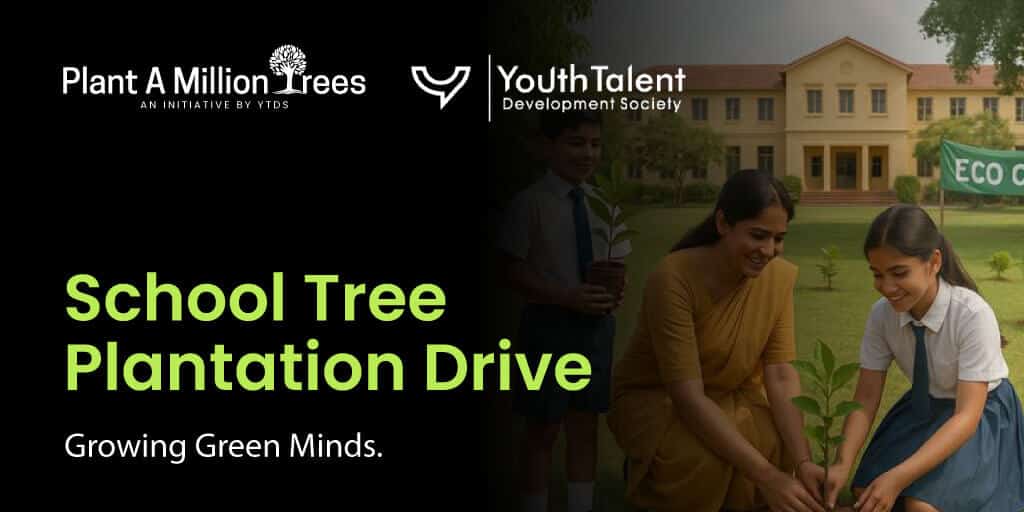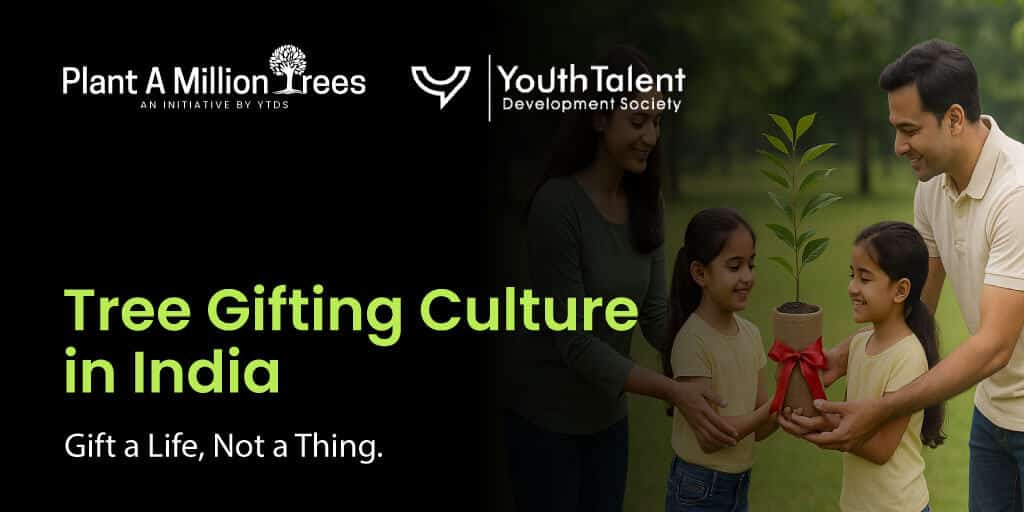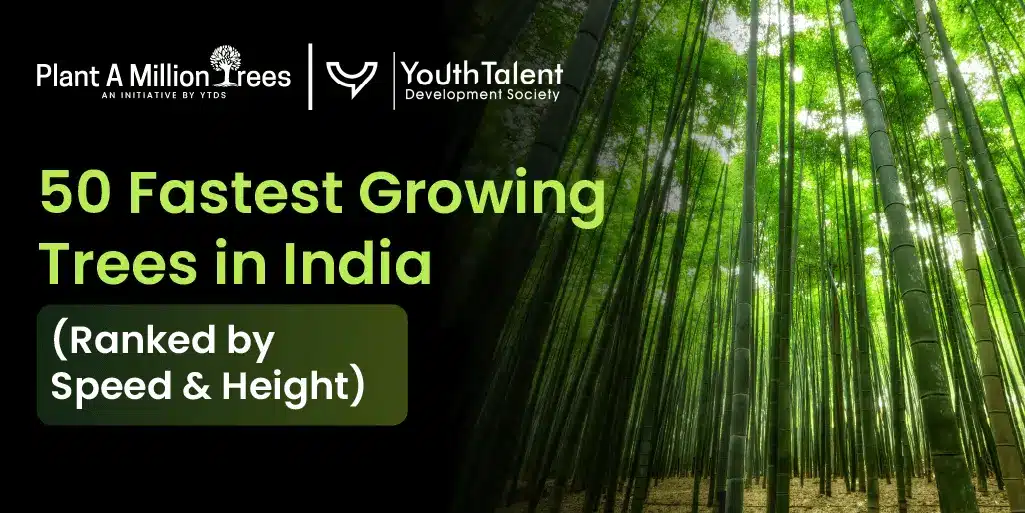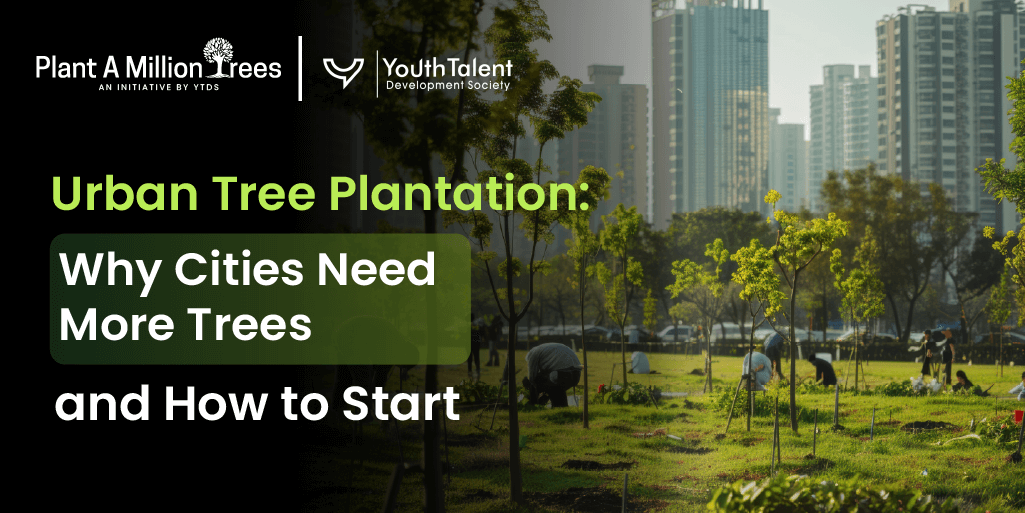We live in the world of excess material presents, gifts: gadgets, accessories, perfumes, hampers, but what do we actually...
Suppose the school morning in which, instead of the normal routine, children are asked to bring shovels and saplings and to sit with them in hand to plant the future. It is what school tree plantation drive is all about, learning that transcends books and sets down roots in the soil.
Schools are not only learning institutions, they are the initial institutions where children develop life time habits, values and environmental awareness. The linkage of schools to sustainability would contribute towards producing responsible citizens who are concerned about nature just like they are concerned about grades.
In an era where climate change, deforestation and pollution are ruling the news, eco-education in India is no more of an option, but a necessity. Planting trees by kids in schools athletes should be encouraged to start planting trees in schools and this will create a feel of environmental respect among the students and it will make the schools become green campuses and the students environmental custodians.
Green schools are not solely tree-planting, but they also raise empathy, leadership, and community spirit. Once a sapling has been planted into the school soil, it is not just a tree that has been planted, but it is a lesson on patience, growth and care.
Why Schools Should Plant Trees
Schools have a special role to play in the future generation of environmental leaders. Experience is the best way to educate children and there cannot be a better means of educating them on sustainability than taking them directly into nature. Planting trees in the school grounds is not only a way of repurposing the school environment but also making the students feel more responsible and belonging to the school.
Planting of trees introduces the students to environmentally conscious school projects that are way beyond the classroom lessons. Students learn the composition of soils, water cycles and carbon absorption when they get their hands dirty, something that no textbook can teach them. This version of green learning among the students fills the gap between learning and the environment and makes the children realize that sustainability is not a lesson but a lifestyle.
Teamwork is also developed by planting trees. Through group work where students decide on which tree species to use, preparing soil and taking care of saplings, they will acquire communication skills and planning skills. It is practical, integrated education, which promotes stewardship of the environment at a very early age.
In addition, the trees also make schools more exciting and motivating. They offer shade, they lower the temperature in the classrooms, they attract birds, and they enhance the quality of air, which has a direct influence on the health status of all students and teachers. Those schools which hold routinely regular plantation drives have high student participation and community backing.
Teachers also are central to it. The education + environment programs help students to make theory become action by means of the innovative process that connects the biology, the geography, and the social studies with the real world. In the long run, student environmental awareness is enhanced as well as long-term values and environmentally friendly habits.
A school tree plantation effort is therefore an exercise of education, leadership and legacy; whereby each tree planted is a stride towards a sustainable future.
How to Plan a Tree Drive
Step-by-Step Planning Guide
To arrange an effective school eco drive in India needs to be prepared, involved and with purpose. As a teacher, student leader, or principal, having a well laid out plan will make sure that your drive is successful and it will make an impression.
The following is the run-by-run checklist of how to store a school tree plantation drive in India.
People need to seek permissions and partnerships to ensure that the intervention is effective.
Step 1: Seek Permissions and Partnerships.
Begin with obtaining the permission of school administration and local authorities. Where your school is operated in rented land, then you must make sure that the property owner or local municipal body authorizes it. Cooperate with NGOs, which helps schools organize eco-drives planting saplings, informs and helps.
Step 2: Select the appropriate Location.
Identify spaces at the school or surrounding that are well exposed to sunlight and water. Shared areas can be playground areas, assembly yards or community areas nearby. Planting around walls and drainages needs to be avoided.
Step 3: Select Suitable Trees
The selection of the correct species is very important. Choose the native Indian trees that would grow in your area and need very little maintenance. Northern Indian schools may use neem, jamun or amaltas, whereas southern schools may use gulmohar, banyan or peepal. Get the sources of saplings by collaborating with local nurseries or non-governmental organizations.
Step 4: Prepare the Soil
Pits should be made before planting day 2-3 feet deep using a mixture of soil with compost or organic manure. Students are given an opportunity to dig/ observe the process as part of a science exercise.
Step 5: Delegate Responsibilities.
Assign pupils into pairs or groups – each group with one or two saplings. The teachers may give such roles as watering, mulching, and maintenance rotation. Establishment of eco-clubs is a guarantee to long-term care.
Step 6: Engage Parents and local communities.
Ask parents and the locals to take part. Their participation does not only create awareness, but also bonds the community.
Step 7: Post-Plantation Care
Planting is not the limit in taking care of trees. Establish watering schedule, protection fencing as well as monthly inspections. The students will have the opportunity to keep growth journals, record the height and leaf developments – incorporate it in the science and art projects.
With the careful planning of each and every step, your school eco drive in India will not be just a one day event but a living and learning ecosystem with students owning the environment in which they are studying.
Fun Activities During Tree Drives
Engaging Students with Green Learning
Even the interactive fun activities that facilitate teamwork and creativity in a student plantation drive make it more meaningful. Planting day can be turned into a day of learning about the environment, fun as well as a green festival that also takes place in schools.
These are just but a few fun activities during tree drives that companies can plan with teachers and students:
- Green Quiz Competitions: Organize quiz games concerning the trees, biodiversity and climate change. Allow students to get to know interesting facts competing in teams.
- Poster-Making Contests: Students can be asked to create poster out of “My Dream Green School” or Each Tree Counts. Display these around campus.
- Debate and Elocution Contests: On such topics as “Should Every School Have a Mini Forest? get students to think critically on sustainability.
- Tree Tagging Ceremonies: Tree tagging is done where the students affixes their sapling with a nameplate, date, and a message with their wishes -this makes them feel personally connected to the sapling and responsible.
- Eco-Club Drama or Skit: The students can act in short dramas or skit on some deforestation, air pollution or water conservation. Storytelling is an art of creativity that enhances emotional comprehension.
- Tree Art Corners: Turn former classrooms or notice boards into Tree Corners where students will drop their photos, drawings or poetry behind their trees.
- Supported by Financial Nurturing- Adopt a Tree Programs: Students do commitment to one year nurturing their sapling – pledging both.
With these sort of green education games, plantation drives become more inclusive and more fun. They involve all types of learners, the visual, auditory, and kinesthetic, and support the ideas about the environment taught in the classroom.
Sustainability is introduced to school culture when green activities of kids are aligned on the school events. The teachers can combine these projects with the environmental studies, English (to write reports), and art lessons making the initiative an entertaining and educational one.
Inspiring School Plantation Stories
Real Case Studies from Indian Schools
In India, there are a number of schools, which have shown some great examples in the form of plantation programs. These Indian school plantation programs show that little programs can do a lot as long as the students are enthusiastic and the teacher guides them.
Example 1: Noida Delhi Public School.
DPS Noida organized a one student one tree campaign together with the Youth Talent Development Society (YTDS). One sapling was planted by every student on the annual day of the school. In less than a year, more than 2,000 saplings had been cultivated to a full fledged mini forest around the play ground. The drive became part of their curriculum of environmental studies and was subsequently named a winner in Green School Award India.
Example 2: State School of education, Kerala.
This was a panchayat-based government school that collaborated with the local panchayat in establishing a Butterfly Garden by planting trees. Indigenous flowering trees such as hibiscus and kanikonna were planted in the areas of students and these trees attract pollinators and enhance biodiversity in the area. The project assisted in integrating the field of environmental awareness with the subject of biology.
Example 3 Vidya Valley International, Pune.
An eco-club of this school developed a one-year environment campaign among students, which aimed at waste sorting, composting, and planting trees. Parents and staff members joined hands and all saplings were scanned with QR code that monitors their growth.
These case studies testify that champions of student environment can spearhead very strong changes. When these schools combine creativity and responsibility these schools have transformed their campuses into living classrooms.
These are programs that should be replicated throughout the country – since when students take the lead in the green change, they motivate whole neighbors.
Teachers as Green Mentors
Integrating Tree Drives into Curriculum
Teachers are the key to changing transformation of tree plantation into a learning experience. They are able to incorporate sustainability throughout the lessons and promote environmental sensitivity in every subject as green mentors.
Making ideas of eco-education curriculum a part of tree drives is not only extra-curricular, but also academic. For example:
- In classes on biology, lessons about plant anatomy can be offered with the help of the sapling of the school.
- Geography is able to research the types of soil and how much rain will fall in the area to plant properly.
- The environmental policies and Indian afforestation programs can be studied in social Studies.
- Mathematics may be based on the calculation of the percentage of CO2 absorption or percentage growth.
Students get to acquire analytical and ethical knowledge when teachers make their lessons to be relevant to real-life use. Learning institutions can set aside weekly eco-days or establish “green task forces” in which students and teachers could work together to maintain trees.
In a program supported by YTDS in Gujarat, science lessons were turned into eco-labs where the teacher taught the students to keep sapling health journals. The outcomes were impressive enough to say the least, as not only the survival rates of saplings were improved, but also the student interest in climate concerns and questions were raised to a much greater extent.
The inclusion of tree plantation programs and teachers in the syllabus will not only promote academic excellence but also environmental awareness, which are the two fundamental elements of an effective and truly modern education.
Conclusion
The idea of planting a tree on campus is not only about greening campus but it is about creating a change of mindset, developing a sense of empathy and educating on the art of giving back. With such a culture in place in schools, they turn into breeding grounds of sustainability.
All the students who plant trees know how to be patient. They are guided by every teacher who develops responsibility. And all saplings planted to-day are to-morrow guardians of the environment.
Principals, NGOs and organizations such as Youth Talent Development Society (YTDS) are crucial in the expansion of this mission. The call-to-action is straightforward: planting trees into the yearly school calendar is a part of all schools.
With the integration of tree drives in the curriculum, schools would be able to produce generations of people who think green, act green, and grow green. Their trees to-day will be the story of education based on responsibility – and this story will be nursed in every leaf.
Frequently Asked Questions
Why is school plantation drives important?
They assist the students to relate practice and theory, and teach them to be responsible and sustainable besides enhancing the ecosystem of the school.
What is the way to arrange a school tree plantation drive in India?
Grant access to plans, use native trees, engage students and collaborate with NGOs such as YTDS. Delegation of maintenance to provide long-term maintenance.
Which are some school tree plantation competitions?
The poster-making, essay writing, naming of trees and quiz contests will promote participatory and awareness.
What are some of the ways in which school projects that are environmentally friendly can aid education?
They incorporate those activities that are based on the environment in the science, art, and social studies lessons, making students learn in practice.
Why is the participation of students important?
The center of such initiatives is the students, as when they plant and tend to the trees, they learn the environmental values at the tender age.
How can NGOs help schools?
Drives are systematically organized and effective by organizations such as Youth Talent Development Society (YTDS) who supply saplings, training and logistical support.
What can teachers say to associate lessons with tree drives?
Through the math classes with tree growth information, the ecosystem service discussion in science and the reflection on community activities in social studies.
So, what is a green school?
When it makes sustainability part of its culture be it in the classrooms or the play ground with tree plantation, waste recycling, and the use of clean energy.




